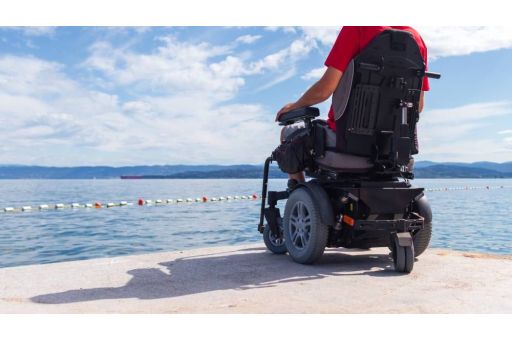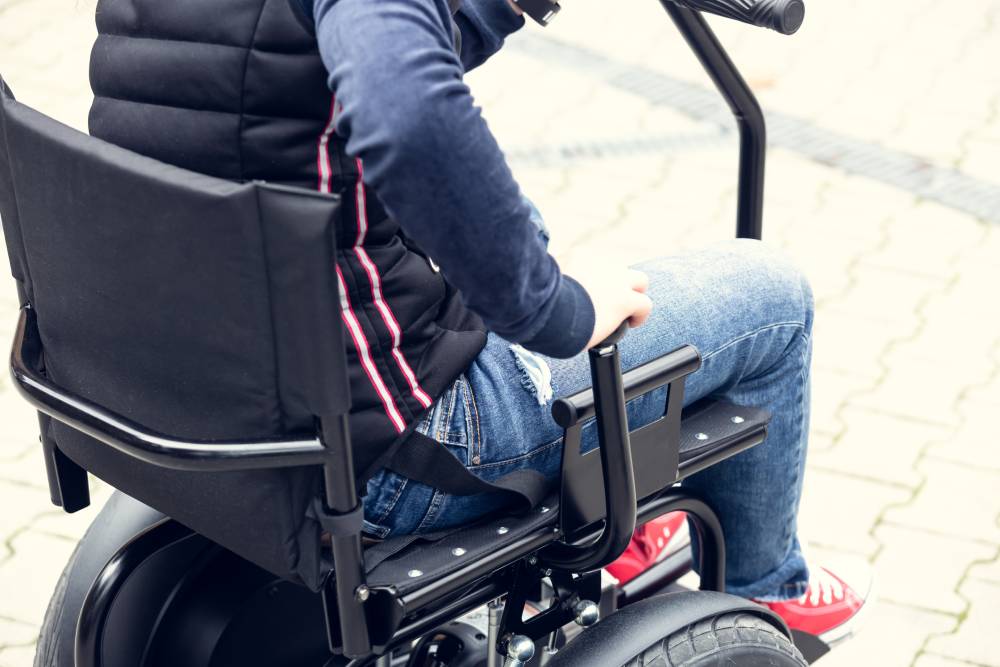
The Ultimate Guide to Proper Wheelchair Positioning
Wheelchairs are indispensable tools that greatly influence the well-being and comfort of individuals facing mobility challenges. Correct wheelchair positioning goes beyond convenience - it plays a vital role in maintaining proper posture, distributing pressure, and preventing potential health issues. This in-depth guide explores the intricacies of proper wheelchair ergonomics to make the wheelchair journey even more convenient.
The Fundamentals of Wheelchair Positioning
Ergonomics forms the backbone of effective wheelchair design. The interaction between the wheelchair’s components and the user’s body is central to achieving proper positioning. The key components include the seat, backrest, footrests, and armrests. All of them contribute to stability, support, and comfort. To meet an individual's unique needs, factors such as body size, posture, and functional requirements should be considered. There are full-sized wheelchairs that are perfect for big adults as well as lightweight models designed for thinner adults and kids.
In most cases, mobility aids are used for prolonged periods of time, so it’s crucial to guarantee proper adjustment of wheelchairs. Neglecting ergonomics and individual requirements may result in adverse effects such as pressure ulcers, musculoskeletal injuries, or spinal deformities.
How to Achieve Optimal Seating Position
One of the key components of effective wheelchair positioning is achieving a balanced and supportive seated position. You should carefully measure the seat depth and width to ensure even weight distribution. Proper seat height is vital for accessibility, comfort, and the user's ability to engage with their surroundings. Addressing pressure distribution is also essential in order to prevent the formation of painful and potentially harmful pressure ulcers. Specialized cushions and backrests can offer added support, enhancing comfort and reducing the risk of skin breakdown.
Ensure Proper Back and Spine Alignment
Maintaining proper spinal alignment is substantial for both comfort and overall health. The angle and height of the backrest should be correctly adjusted to accommodate the natural curvature of the user's spine. Adequate support in the lumbar region and on the sides helps promote stability and prevents undesirable slouching. Providing proper back support not only does it improve posture but also reduces the risk of discomfort and potential musculoskeletal issues.
Address Lower Extremity Positioning
Proper positioning of the lower extremities is crucial for circulation, comfort, and preventing contractures. To maintain optimal alignment, footrests and leg supports should be adjusted to ensure a 90-degree angle at the hips and knees. This alignment helps prevent pressure on the heels and promotes healthy blood flow. The use of leg straps and calf supports can aid in maintaining proper leg positioning, reducing the risk of muscle stiffness and joint problems.
Importance of Armrests in Wheelchair Positioning
Armrests serve a multifunctional purpose, extending beyond mere arm support. They play a paramount role in maintaining proper upper body posture. By customizing the height and width of armrests, you can enhance comfort and distribute weight effectively. This is especially beneficial for individuals who heavily rely on their upper body strength. Appropriate armrest positioning can alleviate discomfort, minimize shoulder strain, and promote overall stability.
Customizing Wheelchair Positioning for Individuals with Specific Needs
Various demographic groups encounter distinct challenges in wheelchair positioning. Pediatric patients necessitate thoughtful consideration of growth and developmental factors. Individuals with spinal cord injuries require specific support to maintain stability as well as minimize the risk of pressure sores. Geriatric users demand attention to age-related posture changes and the assurance of optimal comfort. Tailoring positioning strategies to meet these diverse needs is critical to ensure the proper posture of every client.

How to Measure for an Ergonomic Wheelchair Position - Quick Guide
1. Seat Depth Measurement
- Sit on a firm surface with your back straight and feet flat on the ground.
- Measure the distance from the back of your buttocks to the back of your knees.
- This measurement ensures that your seat depth is appropriate and prevents pressure on your thighs.
2. Seat Width Measurement
- Sit comfortably with your hips and buttocks well back in the chair.
- Measure the widest part of your hips.
- Add a couple of inches to the following measurement to allow for comfortable seating without feeling cramped.
3. Seat Height Measurement
- Sit on a firm surface with your feet flat on the ground.
- Measure from the floor to the crease behind your knee.
- This measurement helps set the seat height to prevent your feet from dragging or straining.
4. Backrest Height Measurement
- Sit upright in the wheelchair with your back straight.
- Measure from the seat surface to the top of your shoulder blades.
- This measurement ensures that the backrest supports your upper body without interfering with your shoulders.
5. Footrest Height Measurement
- Sit comfortably with your feet flat on the ground.
- Measure from the floor to the bottom of your heel.
- Adjust the footrest height to prevent your feet from dangling or pressing too hard against the footrests.
6. Armrest Height Measurement
- Sit in the wheelchair with your arms relaxed at your sides.
- Measure from the seat surface to your elbow.
- Adjust the armrest height so that your forearms can rest comfortably without straining your shoulders.
The Role of Healthcare Professionals in Wheelchair Positioning
Achieving and maintaining optimal wheelchair positioning requires collaboration among healthcare professionals, caregivers, and wheelchair users themselves. Trained therapists and clinicians conduct comprehensive assessments, analyze postural requirements, and suggest necessary adjustments. Regular follow-up appointments ensure that evolving needs are met and any discomfort is promptly addressed.
Caregivers should be well-educated about proper positioning techniques. They should get the hang of adjusting wheelchairs to meet their patient’s evolving needs and identifying signs of inadequate positioning. Caregivers should also receive training on assisting users in achieving and maintaining correct positioning, especially for individuals with limited mobility.
Maintaining Long-Term Comfort and Health
Ensuring optimal wheelchair positioning is an ongoing responsibility rather than a one-time task. It necessitates regular and attentive checks, as well as adjustments to accommodate changes in the user's body, health status, and lifestyle. Consistently monitoring skin integrity is vital to prevent pressure sores, enhance comfort, and mitigate potential complications. As the needs of wheelchair users evolve, adapting positioning strategies accordingly becomes imperative.
Innovations in Wheelchair Design
The future of wheelchair design is characterized by innovation, propelled by adaptive technologies and intelligent solutions. Sensor-equipped and automated smart wheelchairs provide immediate adjustments, improving user comfort and minimizing the potential for incorrect positioning. Such advancements not only transform the user experience but also emphasize the significance of keeping pace with technology to offer optimal support.
Conclusion
Proper wheelchair positioning is a crucial aspect that significantly impacts the overall quality of life for individuals with mobility challenges. This comprehensive guide explains the importance of achieving balanced seating, maintaining spinal alignment, and addressing specific user requirements. By exploring the principles of an ergonomic wheelchair posture, wheelchair users can experience improved comfort and the desire to actively participate in the world around them.


